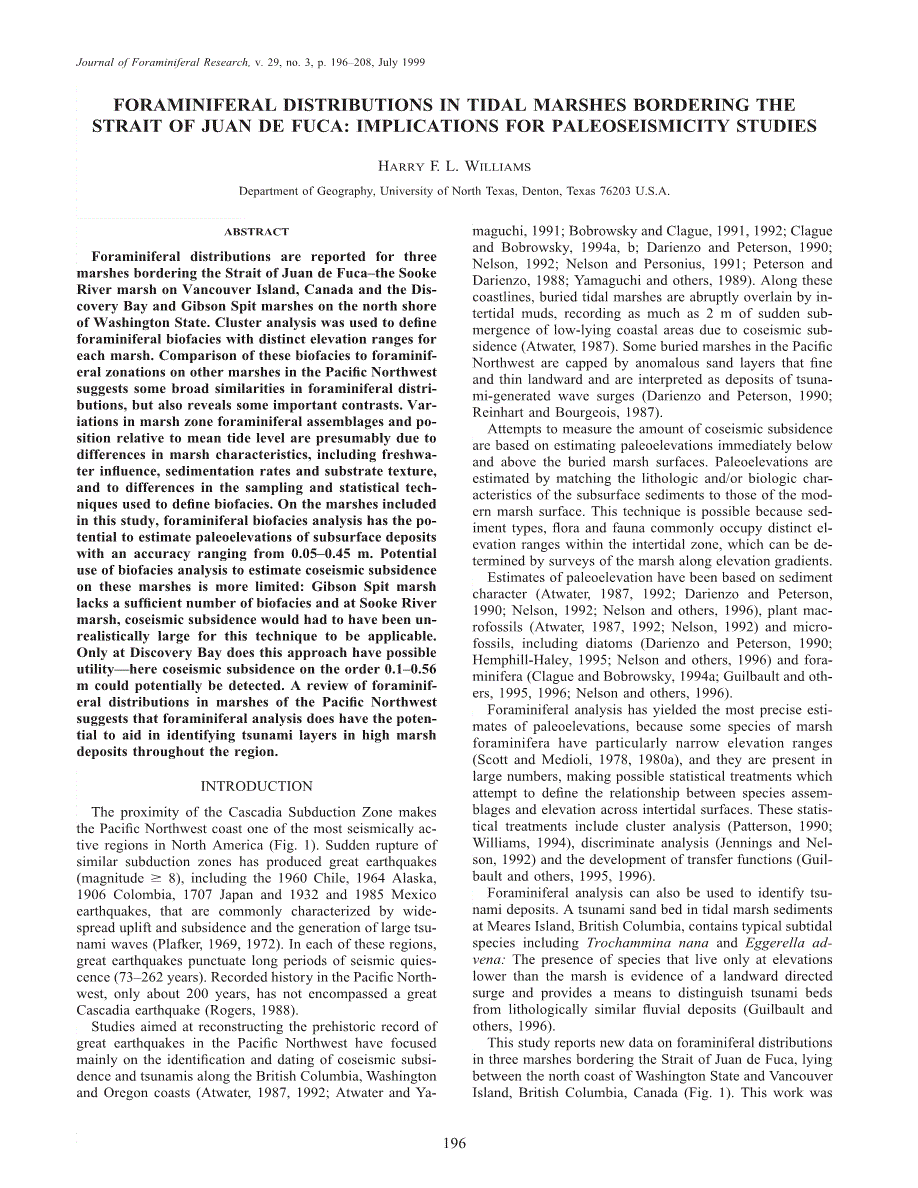Abstract
Foraminiferal distributions are reported for three marshes bordering the Strait of Juan de Fuca-the Sooke River marsh on Vancouver Island, Canada and the Discovery Bay and Gibson Spit marshes on the north shore of Washington State. Cluster analysis was used to define foraminiferal biofacies with distinct elevation ranges for each marsh. Comparison of these biofacies to foraminiferal zonations on other marshes in the Pacific Northwest suggests some broad similarities in foraminiferal distributions, but also reveals some important contrasts. Variations in marsh zone foraminiferal assemblages and position relative to mean tide level are presumably due to differences in marsh characteristics, including freshwater influence, sedimentation rates and substrate texture, and to differences in the sampling and statistical techniques used to define biofacies. On the marshes included in this study, foraminiferal biofacies analysis has the potential to estimate paleoelevations of subsurface deposits with an accuracy ranging from 0.05-0.45 m. Potential use of biofacies analysis to estimate coseismic subsidence on these marshes is more limited: Gibson Spit marsh lacks a sufficient number of biofacies and at Sooke River marsh, coseismic subsidence would had to have been unrealistically large for this technique to be applicable. Only at Discovery Bay does this approach have possible utility--here coseismic subsidence on the order 0.1-0.56 m could potentially be detected. A review of foraminiferal distributions in marshes of the Pacific Northwest suggests that foraminiferal analysis does have the potential to aid in identifying tsunami layers in high marsh deposits throughout the region.






